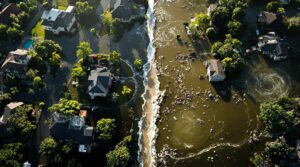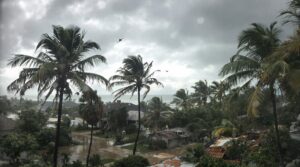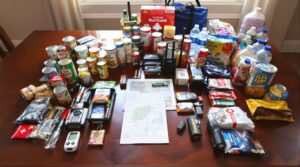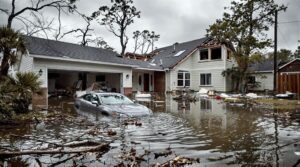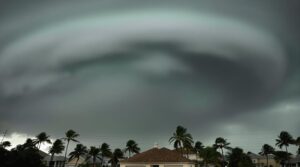Surviving a hurricane requires careful preparation and decisive action. Essential steps include creating an emergency kit with water, non-perishable food, and medical supplies for at least three days. Homeowners must secure properties, board windows, and identify safe interior rooms away from glass. Monitor weather updates closely and follow evacuation orders immediately if issued. Understanding proper safety protocols and having a clear family communication plan can mean the difference between life and death during severe storms.
Key Takeaways
- Create an emergency kit with three days of water, non-perishable food, medications, flashlights, and a battery-powered radio.
- Monitor weather updates constantly and evacuate immediately if authorities issue orders for your area.
- Stay in a secure interior room away from windows during the storm, using battery-powered lights instead of candles.
- Keep important documents protected and prepare multiple evacuation routes in advance of the hurricane.
- Have enough drinking water stored (one gallon per person daily) and secure outdoor items that could become projectiles.
Understanding Hurricane Dangers and Warning Signs
When a hurricane threatens, understanding its dangers and recognizing early warning signs can mean the difference between life and death. Major hurricane hazards include storm surge, heavy rainfall, high winds, rip currents, and tornadoes, each capable of causing severe destruction and loss of life.
Key hurricane preparedness tips emphasize monitoring warning sign recognition 36 to 72 hours before landfall. Critical indicators include increased ocean swells, dropping barometric pressure, and intensifying wind speeds.
Heavy rainfall typically begins about 18 hours before the storm's arrival, while dangerous rip tides push away from the shoreline as the hurricane approaches. The rain starts as driving and intermittent before developing into a continual downpour.
Storm surge poses the greatest threat to coastal areas, while inland regions face severe flooding risks from rainfall. High winds can demolish structures and create widespread power outages.
The formation of tornadoes adds another layer of danger, making it essential to stay informed through emergency alerts and follow local evacuation orders.
Essential Hurricane Survival Supplies You Need
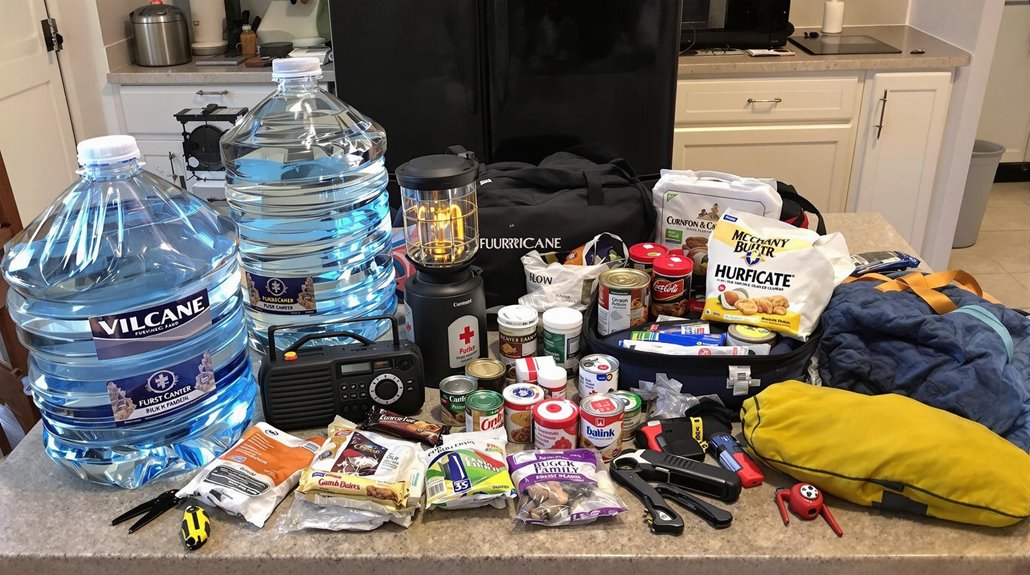
Preparation demands a thorough stockpile of essential supplies to withstand a hurricane's destructive impact. Water storage and emergency food form the foundation of survival preparedness, with one gallon of water per person daily and non-perishable items stored in airtight containers. A three-day supply supports evacuation scenarios, while a two-week supply guarantees extended home stays. Safe fuel storage away from living spaces is crucial when maintaining extra gasoline for generators and vehicles.
Critical equipment includes battery-powered lighting, communication devices, and emergency radios for staying informed of weather updates. A detailed first aid kit, complete with prescription medications and hygiene supplies, safeguards health during the crisis.
Shelter protection necessitates tarps, duct tape, and basic repair tools to address structural damage. The inclusion of a generator provides backup power for essential appliances, while sleeping bags offer comfort during outages.
Multi-tools, whistles, and insect repellent round out the essential supplies, guaranteeing preparedness for various emergency scenarios.
Creating Your Family's Emergency Action Plan
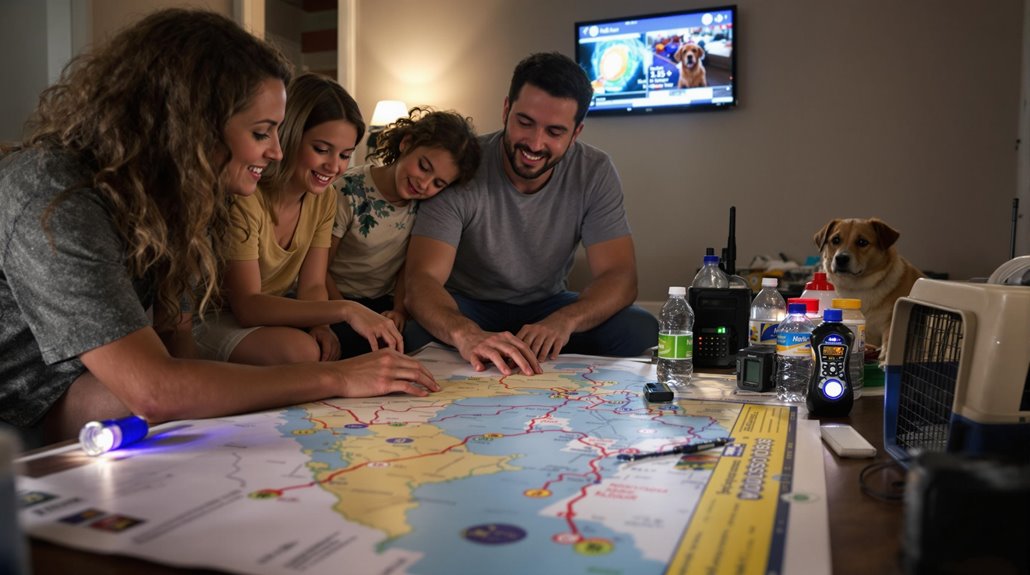
Creating a thorough family emergency action plan stands as the cornerstone of hurricane survival preparedness. This critical plan encompasses three main components: emergency alerts, shelter planning, and family communication strategies.
Families should first establish reliable ways to receive emergency notifications through AlertFlorida and Ready.gov systems, guaranteeing all members understand various warning types.
The shelter plan requires identifying multiple safe locations using Ready.gov and FloridaDisaster.org resources, while considering specific family needs and pet policies. All household members should practice evacuation routes regularly to ensure familiarity with the designated paths.
A detailed family communication plan includes detailed contact information for all members and designates an out-of-town contact person for check-ins during emergencies. The plan should list essential phone numbers and establish meeting points if separation occurs.
Regular maintenance guarantees the plan remains effective. Families should conduct evacuation drills, test emergency equipment, update contact information annually, and rotate emergency supplies to maintain readiness for hurricane situations.
Safe Shelter and Evacuation Strategies
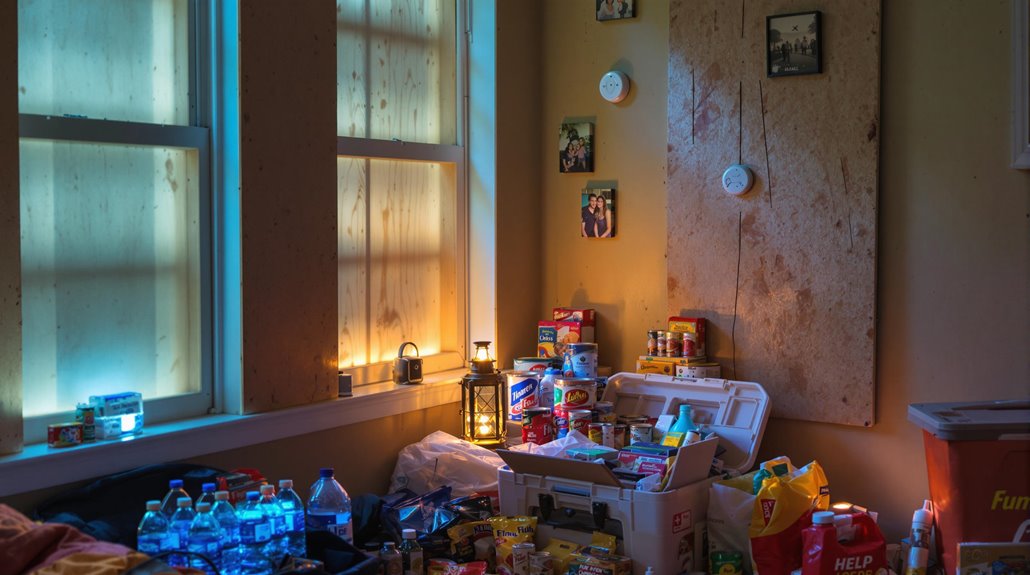
The decision to shelter in place or evacuate during a hurricane can mean the difference between life and death. Proper shelter preparation requires securing important documents, reinforcing windows with plywood or storm shutters, and removing potential projectiles from outdoor spaces.
Families should identify safe interior rooms away from windows and guarantee emergency supply kits are readily available. Carbon monoxide detectors are essential safety devices that must be installed near sleeping areas to protect against generator fumes.
Effective evacuation planning involves mapping multiple escape routes, preparing go-bags with essential supplies, and maintaining reliable transportation. Residents must stay informed about official evacuation orders and designated shelter locations.
For those sheltering in place, choosing an interior room without windows offers the best protection. Critical actions include monitoring weather updates, turning off utilities if flooding occurs, and elevating valuable possessions above potential flood levels.
Special attention should be given to assisting vulnerable neighbors and keeping family members together. Whether evacuating or sheltering in place, avoiding floodwaters and following official instructions remains paramount for survival.
Critical Steps for Post-Hurricane Recovery
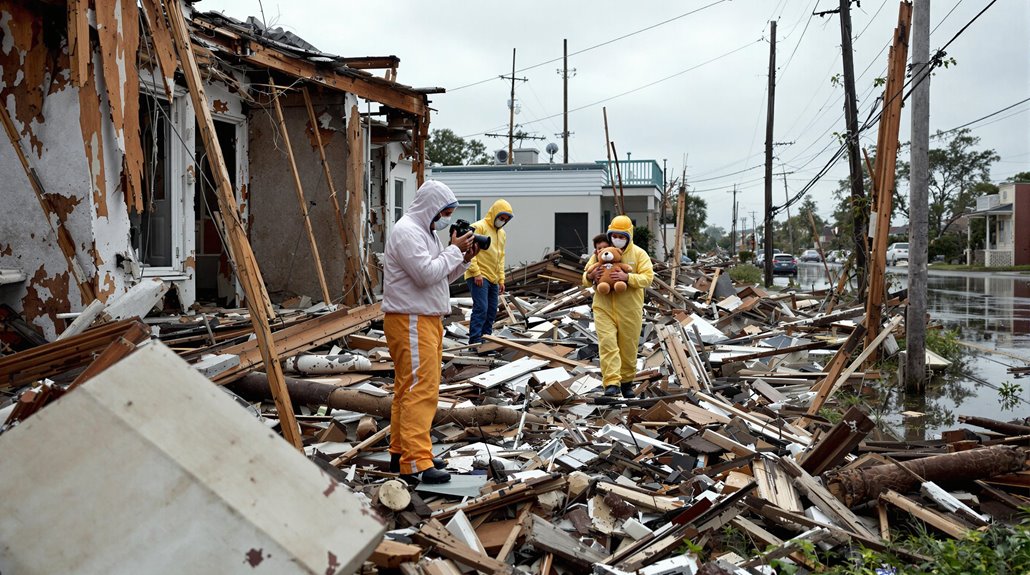
Successful post-hurricane recovery begins with careful assessment and adherence to safety protocols when returning home. Residents must first verify with local authorities that their area is safe for re-entry and keep identification ready.
Upon arrival, they should conduct a thorough inspection for hazards like downed power lines, gas leaks, and flooding. A systematic damage assessment is essential, including photographing all property damage and documenting losses for insurance purposes.
Residents should avoid contaminated water, dispose of spoiled food, and wear protective gear during cleanup. Professional evaluations may be necessary for structural damage to foundations, roofs, and critical systems. Following health advisories, residents must boil tap water before consumption to prevent illness.
The recovery process extends beyond physical repairs. While prioritizing immediate fixes like covering damaged roofs, individuals should maintain realistic expectations about rebuilding timeframes.
Emotional recovery often requires patience and professional support, as communities work together to restore normalcy after the disaster.
About The Public Claims Adjusters Network (PCAN)
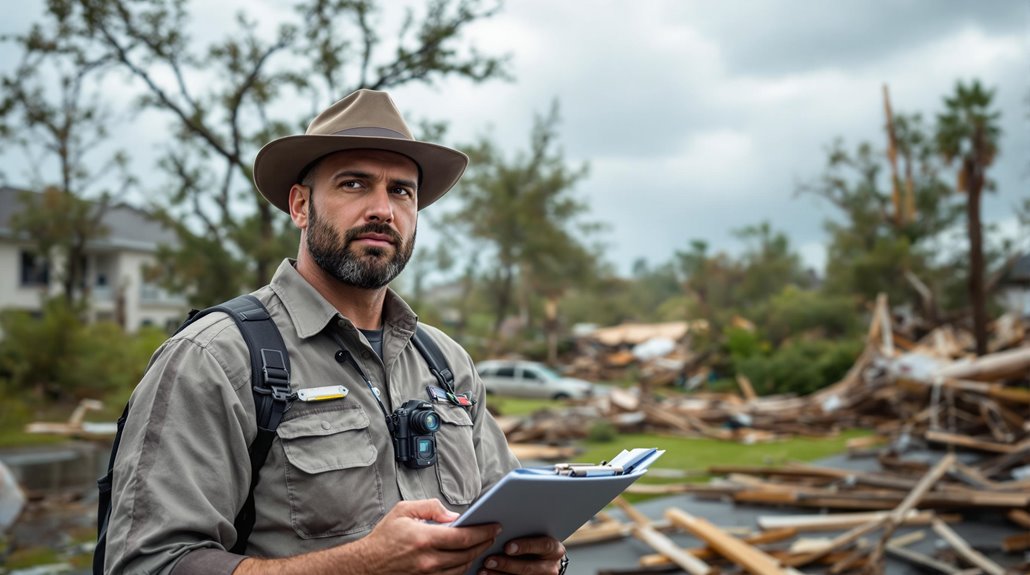
Professional assistance during insurance claims becomes essential when managing hurricane damage, which is why public claims adjusters serve as licensed advocates for policyholders. These state-licensed professionals provide technical expertise in interpreting insurance policies and documenting losses to guarantee fair settlements.
Public adjusters operate within a regulated framework, following strict professional standards across 45 states and the District of Columbia. They must notify insurers of their representation within two business days and communicate all settlement offers to policyholders within five business days. Their contracts and fee structures require approval from the Insurance Department. Many public adjusters have gained valuable insider insurance knowledge from previous work at insurance companies.
During the claims process, these adjusters handle critical tasks including policy review, thorough damage documentation, loss estimation, and settlement negotiations. Their primary goal is maximizing compensation while reducing stress for policyholders.
Frequently Asked Questions
How Do I Protect My Pets During a Hurricane?
Like a fortress protects its inhabitants, pet owners must shield their animals during hurricanes.
Advance preparation includes identifying pet-friendly evacuation locations and assembling emergency supplies with food, medications, and documentation.
Keeping pets indoors in safe spaces away from windows is essential during the storm.
Maintaining routines, providing comfort, and supervising pets throughout the event helps guarantee their safety and well-being.
Can I Run My Generator Indoors During a Power Outage?
Running a generator indoors is extremely dangerous and potentially lethal.
Generator safety guidelines strictly prohibit indoor operation, including in garages, basements, or crawl spaces. These indoor hazards exist because generators produce carbon monoxide, a deadly gas that can cause fatal poisoning within minutes.
Proper placement requires operating generators outdoors, at least 20 feet away from all windows, doors, and vents, with unobstructed airflow.
What Should I Do if My Car Gets Flooded?
Like a drowning victim needs immediate rescue, a flooded car requires swift action to prevent permanent damage.
When a vehicle is flood-damaged, owners should avoid starting the engine, disconnect the battery immediately, and document everything with photos for car insurance claims.
Remove water quickly using wet/dry vacuums, open all doors and windows for ventilation, and have professionals inspect all mechanical and electrical systems before attempting operation.
How Long Can Refrigerated Food Last During a Power Outage?
During a power outage, refrigerated food stays safe for up to 4 hours if the door remains closed.
Maintaining food safety requires monitoring refrigerator temperature, which should not exceed 40°F. After 2 hours above this temperature, perishable items must be discarded. A thermometer helps track conditions accurately.
Using ice packs and minimizing door openings can extend food preservation time.
When uncertain about food safety, disposal is the safest option.
When Is It Safe to Swim in Flood Waters After a Hurricane?
Swimming in flood waters after a hurricane is never safe due to severe contamination risks.
Flood water safety experts emphasize that these waters contain dangerous bacteria from sewage, chemicals, and debris.
Swimming risks include exposure to waterborne illnesses, injuries from hidden debris, and potential drowning in swift currents.
Residents should wait for official clearance from local authorities and confirmed water quality test results before resuming any water activities.
References
- https://www.ucf.edu/hurricane/preparedness/
- https://www.constellation.com/energy-101/weather-preparedness/hurricane-supply-list.html
- https://ivypanda.com/essays/how-to-prepare-for-a-hurricane/
- https://www.uscg.mil/Portals/6/FINCEN/Documents/Tidewater_Area_HurricaneGuide.pdf?ver=2018-10-23-122633-937
- https://www.miamidade.gov/global/emergency/hurricane/kits-checklists.page
- https://www.aipflorida.com/blog/warning-signs-for-a-hurricane/
- https://www.weather.gov/lwx/warningsdefined
- https://www.ready.gov/hurricanes
- https://www.nhc.noaa.gov/prepare/hazards.php
- https://www.boat-ed.com/indiana/studyGuide/Weather-Warning-Display-Signals/10101602_35458/
